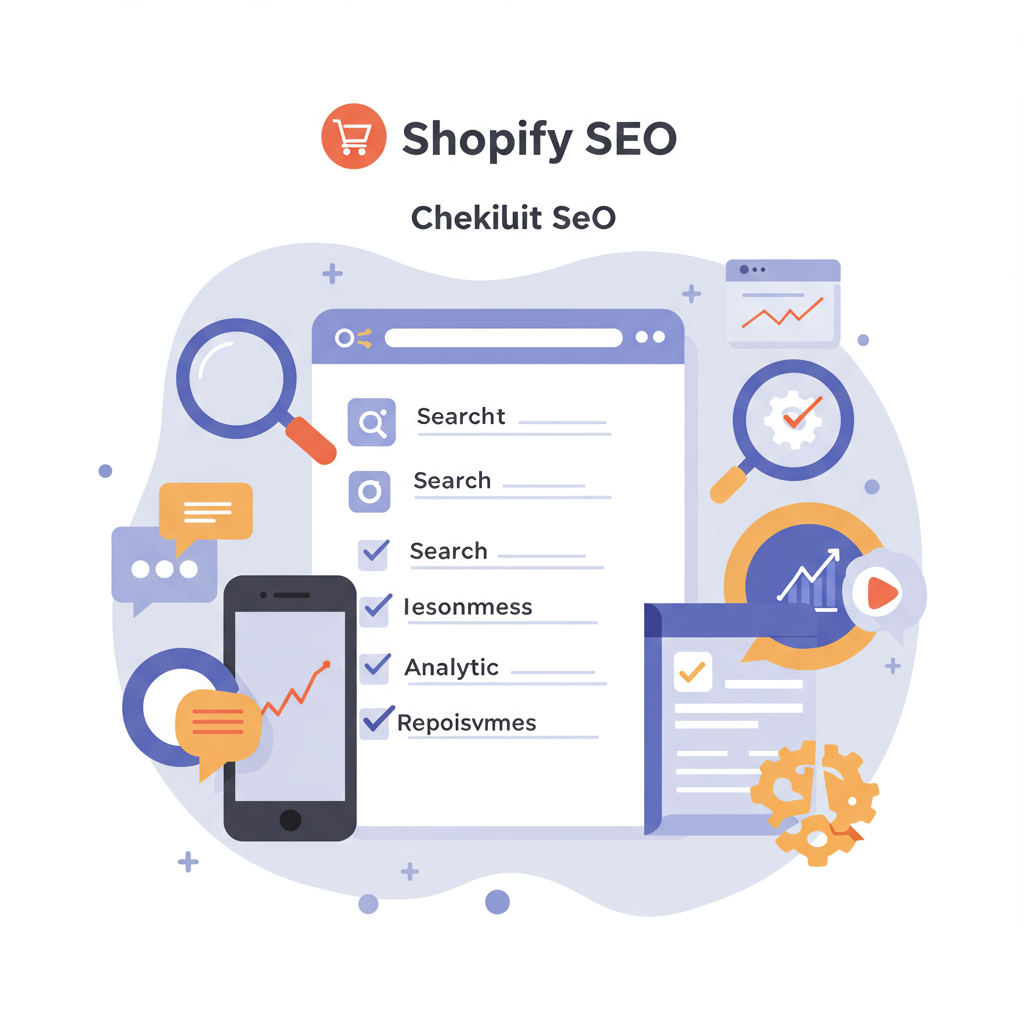Future-Proofing Your Online Store’s Visibility and Sales
Hello fellow merchants! I’m here today to talk about something absolutely crucial for your online store’s future: Search Engine Optimization, or SEO.
Specifically, we’re diving into a comprehensive Shopify SEO checklist designed to propel your business forward into 2026 and beyond.
The digital landscape is constantly evolving, and staying ahead of the curve with your search engine optimization is no longer optional; it’s a necessity for survival and growth.
My goal is to provide you with actionable insights and a clear roadmap to ensure your Shopify store ranks high, attracts more organic traffic, and ultimately, drives more sales.
Let’s start with the absolute foundation: **Keyword Research for 2026**. This isn’t just about finding popular terms anymore; it’s about understanding user intent.
I strongly recommend focusing on long-tail keywords, which are more specific phrases that users type into search engines. They often indicate higher purchase intent and less competition.
Think about semantic search and user intent. Google is getting smarter; it understands the context and meaning behind queries, not just exact keyword matches. Your content should reflect this deeper understanding.
Consider voice search optimization too. People are increasingly using virtual assistants like Siri and Alexa, so think about how questions are phrased naturally when spoken.
Next on our checklist is **On-Page SEO**. This refers to all the optimizations you can make directly on your website to improve its ranking.
For every product page, collection page, and blog post, I urge you to craft unique, keyword-rich meta titles and meta descriptions. These are your store’s storefront in search results, enticing clicks.
Don’t forget your product descriptions. They should be detailed, engaging, and naturally incorporate your target keywords. Avoid duplicate content at all costs, as it can harm your rankings.
Image optimization is vital. I always ensure all product images and blog post images have descriptive alt text. This helps search engines understand your images and significantly improves accessibility for users with visual impairments.
Implementing structured data (Schema Markup) is another powerful on-page tactic. This helps search engines display rich snippets for your products, like star ratings and prices, directly in search results, making your listing stand out.
Moving to **Technical SEO**, this is about ensuring search engines can easily crawl and index your site. Site speed is paramount; a slow site frustrates users and hurts rankings.
I regularly check my Shopify store’s loading speed using tools like Google PageSpeed Insights and GTmetrix. Aim for the fastest possible load times across all devices.
Mobile-friendliness is non-negotiable. Most of your customers will likely browse on mobile devices, so your store must be perfectly responsive and offer an excellent mobile experience.
Ensure your sitemap.xml file is up-to-date and submitted to Google Search Console. This tells search engines about all the pages on your site that you want them to crawl.
I also pay close attention to broken links and 404 errors. These create a poor user experience and can negatively impact your SEO. Regularly audit your site for these issues and fix them promptly.
Canonical tags are important for preventing duplicate content issues, especially with product variations or filtered collection pages. Make sure they are correctly implemented to point to the preferred version of a page.
**Content Marketing** remains a cornerstone of effective SEO. A robust blog strategy can drive significant organic traffic and establish your brand as an authority.
I focus on creating high-quality, valuable content that answers my customers’ questions and solves their problems. This builds authority and trust with both your audience and search engines.
Consider diversifying your content. Beyond blog posts, think about video tutorials, infographics, or even interactive tools related to your products. Visual and interactive content often performs very well.
**Off-Page SEO**, primarily building high-quality backlinks, is still incredibly important. I seek out reputable websites in my niche for collaborations, guest posting opportunities, or product reviews.
Remember, it’s about quality over quantity when it comes to backlinks. A few strong, relevant links from authoritative sites are far more valuable than many low-quality, spammy ones.
**User Experience (UX)** is increasingly intertwined with SEO. Google’s Core Web Vitals measure aspects like loading performance, interactivity, and visual stability, directly impacting your rankings.
I strive to make my site navigation intuitive and straightforward. A good user experience keeps visitors on your site longer, reduces bounce rates, and signals to search engines that your content is valuable.
Finally, **Analytics and Monitoring** are crucial. I regularly check Google Analytics and Google Search Console to track my performance, identify trends, and spot potential issues.
These tools provide invaluable data on keywords driving traffic, popular pages, user behavior, and any crawl errors. They help me refine my strategy and make data-driven decisions.
What do you think about this comprehensive Shopify SEO checklist? I’d love to hear your thoughts and any strategies you’ve found particularly effective in your own Shopify journey!
As we look towards 2026, remember that SEO is an ongoing process, not a one-time task. The algorithms change, and your competitors are always working to improve.
By consistently applying these strategies, you’ll not only improve your search rankings but also build a more resilient and profitable Shopify store that stands the test of time.
I encourage you to start implementing these steps today. Your future self, and your sales figures, will undoubtedly thank you for it.






